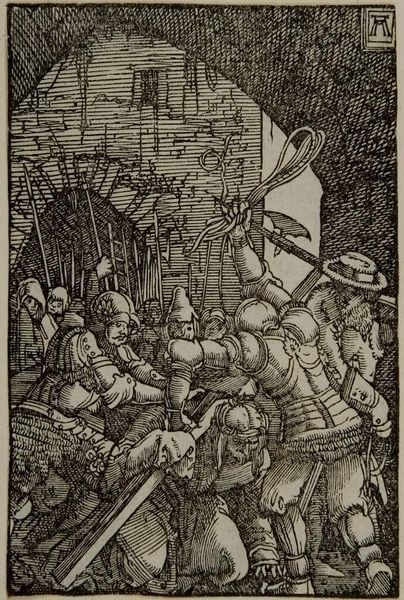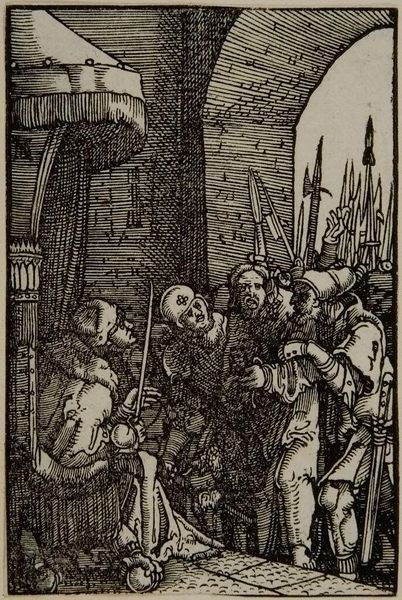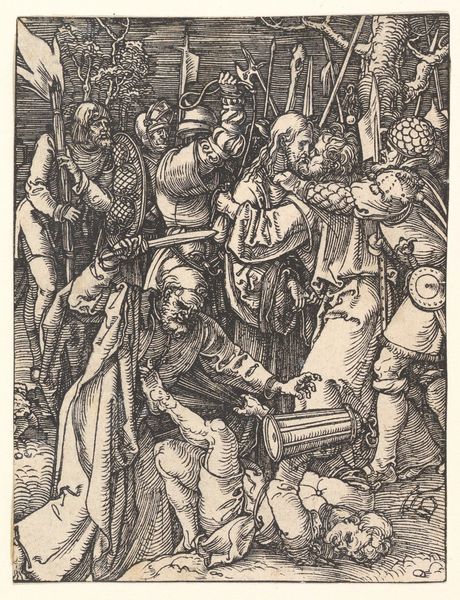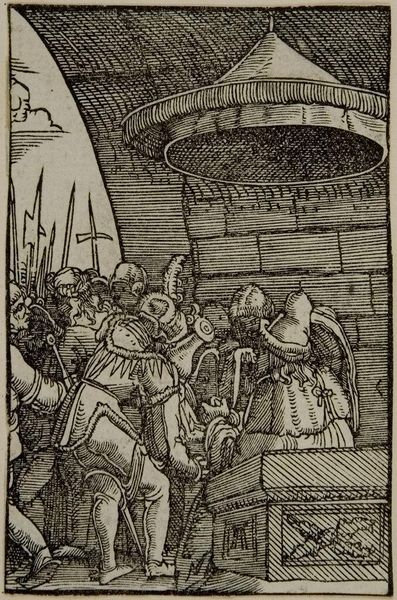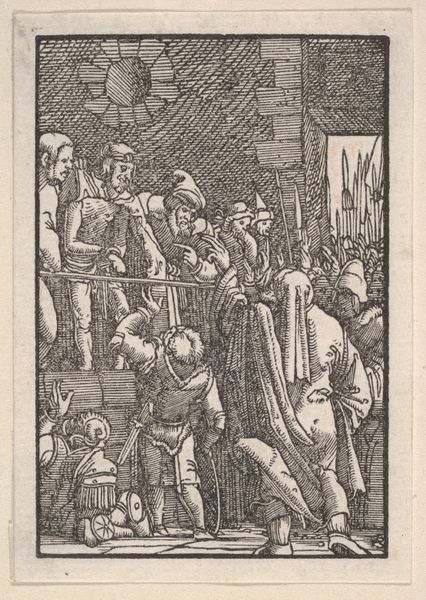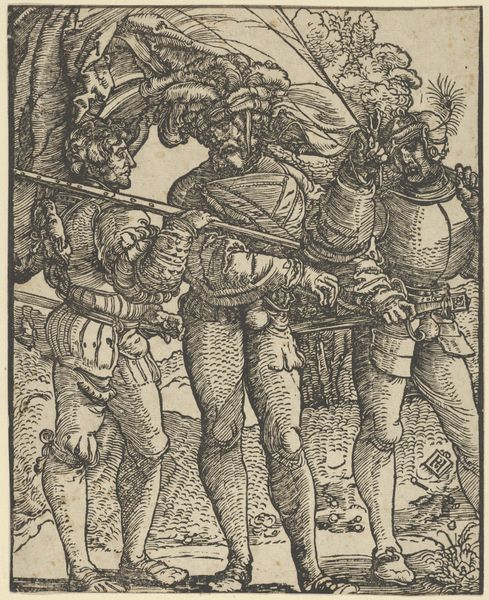
Bearing of the Cross, from The Fall and Redemption of Man 1513
0:00
0:00
drawing, print, paper, woodcut
#
drawing
#
medieval
# print
#
figuration
#
paper
#
woodcut
#
history-painting
Dimensions: 72 × 48 mm (image/block)
Copyright: Public Domain
Curator: This woodcut, “Bearing of the Cross, from The Fall and Redemption of Man,” was created by Albrecht Altdorfer around 1513. It’s currently held here at the Art Institute of Chicago. Editor: It’s… claustrophobic. The press of bodies, the contrast of light and shadow… it feels less like a depiction of faith and more like a scene of mob violence. Curator: Look at how Altdorfer achieves that effect. He carves such dense, tangled lines into the woodblock, using the black ink not just to depict forms, but to create an overwhelming sense of weight and pressure. Note, too, that a print such as this would have been relatively accessible. The multiplication made possible via printmaking enabled distribution of imagery, and therefore, ideology. Editor: Absolutely. And the violence depicted has such resonance given the sociopolitical unrest during the early 16th century, doesn't it? The peasant wars were brewing. This image speaks to power structures, the physical embodiment of oppression enacted on a single figure representing the downtrodden masses. Who wields the whip? Who bears the burden? Curator: And consider the labor involved in its creation. Every single line had to be meticulously carved into the wood, in reverse, by hand. The texture is paramount, because this wasn't about painterly naturalism; the physical act of production mirrors the subject: demanding, hard labor. Each print taken from the block then distributes the results of this intense material process, allowing broader engagement than any unique painting could achieve. Editor: And within that context, we see that Christ here isn’t presented as a divine being floating serenely above it all. Altdorfer grounds him, makes him a figure subjected to brutal force. Consider the bag he clutches; what’s inside? And does it signify how economic forces intertwine with religious ones? It prompts reflection on whose stories are centered and whose sacrifices are trivialized within power dynamics. Curator: The success of Altdorfer's work lies not just in its symbolic resonance, but also its skillful rendering of the material – the ink, the paper, and of course, the wood. Editor: Precisely, and acknowledging this interaction helps dismantle the idea of the artwork as an isolated object divorced from both creation and reception. We need to continuously scrutinize what cultural narratives these representations reinforce, and to remember, art is rarely neutral.
Comments
No comments
Be the first to comment and join the conversation on the ultimate creative platform.
